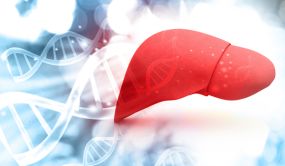Is Arthritis Inevitable With Age? Early Arthritis Symptoms and Proven Treatment Options for Joint Pain at Any Age
Arthritis, a condition characterized by joint inflammation and pain, is often associated with aging. However, is it truly inevitable as people grow older? This article explores whether arthritis is a natural part of aging, the early symptoms to watch for, and effective treatment options that can help manage the condition and preserve joint health. Understanding arthritis treatment, arthritis symptoms, and age-related joint pain is crucial for maintaining mobility and quality of life.
Is Arthritis Inevitable as You Get Older?
Aging does affect joint health, but arthritis is not an unavoidable consequence of growing older. While many older adults may experience joint pain as part of normal wear and tear, this does not necessarily mean they have arthritis.
Arthritis is a chronic condition characterized by joint inflammation, which multiple factors, including genetics, injury, autoimmune processes, and lifestyle factors such as obesity can trigger. Normal joint aging may cause some stiffness and discomfort, but persistent inflammation and damage are not guaranteed in every individual. Therefore, arthritis development involves risk factors beyond just age.
What Are the Early Symptoms of Arthritis?
Recognizing early arthritis symptoms is key to timely diagnosis and treatment. Common symptoms include joint pain, swelling, stiffness, especially noticeable in the morning or after periods of inactivity, and reduced range of motion. These signs distinguish arthritis-related joint pain from age-related discomfort, which tends to be less persistent and severe. Early detection allows for intervention before significant joint damage occurs, improving treatment outcomes.
Effective Early Treatment Options for Arthritis
The primary goals of arthritis treatment are to relieve pain, reduce inflammation, and maintain joint function. Treatment often involves a combination of approaches tailored to the patient's specific type of arthritis and severity of symptoms.
- Medications: Nonsteroidal anti-inflammatory drugs (NSAIDs) such as ibuprofen or naproxen help reduce pain and swelling. Acetaminophen can also relieve mild to moderate pain. For inflammatory arthritis, disease-modifying antirheumatic drugs (DMARDs) target the underlying disease process to slow progression. Corticosteroid injections provide quick relief in inflamed joints. Newer options like duloxetine and tramadol may be prescribed for chronic pain management.
- Physical Therapy and Exercise: Structured exercise programs focusing on strength, flexibility, and aerobic fitness improve joint mobility and reduce symptoms. Physical therapists design customized routines that promote joint stability and function. Low-impact activities like swimming or walking are particularly beneficial.
- Lifestyle Changes: Weight management reduces mechanical stress on joints; each pound lost can lower knee joint load by about four pounds. An anti-inflammatory diet rich in omega-3 fatty acids and low in processed foods supports joint health. Joint protection techniques and assistive devices can help minimize strain.
- Alternative and Emerging Therapies: Platelet-rich plasma (PRP) therapy and regenerative treatments aim to promote healing by harnessing the body's own growth factors. Although promising, these require further validation. Some patients benefit from complementary therapies like massage or shockwave therapy.
Can Early Treatment Prevent Arthritis Progression?
Early and consistent management of arthritis can effectively slow disease progression, especially in inflammatory conditions such as rheumatoid arthritis. Non-surgical treatments are most effective when initiated before extensive joint damage, according to the World Health Organization. If symptoms worsen despite these measures, surgical options such as joint replacement or realignment (osteotomy) may be considered to restore function.
How to Manage Joint Pain Related to Aging
Joint pain at any age can be managed through various strategies:
- Using heat or cold therapy for symptomatic relief
- Taking over-the-counter NSAIDs or acetaminophen as needed
- Incorporating low-impact exercise to maintain mobility
- Ensuring proper ergonomics and using braces or orthotics for joint support
It is essential to understand that some age-related joint pain does not always signal arthritis but should still be addressed to preserve joint health, according to the Centers for Disease Control and Prevention.
When Should You See a Doctor for Joint Pain?
Medical evaluation is recommended if joint pain persists for more than a few weeks, is accompanied by swelling, redness, or warmth, limits daily activities, or is accompanied by systemic symptoms such as fever or unexplained weight loss. Doctors use medical history, physical exams, imaging, and laboratory tests to diagnose the specific type of arthritis and recommend a personalized treatment plan.
This comprehensive overview shows that while joint pain with age is common, arthritis is not an inevitable part of aging, and early treatment options can significantly improve outcomes. Effective arthritis treatment involves a multidisciplinary approach, including medications, physical therapy, lifestyle modifications, and emerging therapies to control symptoms and preserve joint function. Recognizing arthritis symptoms early and consulting healthcare professionals promptly can prevent progression and enhance quality of life at any age.
Frequently Asked Questions
1. Can lifestyle changes prevent the onset of arthritis?
Lifestyle modifications such as maintaining a healthy weight, eating a diet rich in omega-3 fatty acids, and engaging in regular low-impact exercise may reduce the risk of developing certain types of arthritis or delay the onset of symptoms. Avoiding smoking and protecting joints from injury also contribute to prevention efforts.
2. What types of exercise are best for people at risk of arthritis?
Low-impact aerobic exercises like walking, swimming, and cycling are recommended to keep joints flexible and strengthen surrounding muscles without overloading the joints. Flexibility exercises such as stretching, yoga, and Pilates help maintain joint mobility and reduce stiffness.
3. How does weight management influence arthritis symptoms?
Excess weight increases mechanical stress on weight-bearing joints, such as the knees and hips, accelerating cartilage wear and joint inflammation. Losing even a small percentage of body weight can significantly reduce joint pain and improve function, underscoring the importance of weight management in arthritis treatment and prevention.
4. Are there ways to protect joints from damage in daily activities?
Yes, joint protection techniques such as using proper lifting methods, avoiding repetitive strain motions, and using assistive devices when needed can help reduce joint stress and prevent injury. Taking breaks and using ergonomic supports also help preserve joint health over time.




























